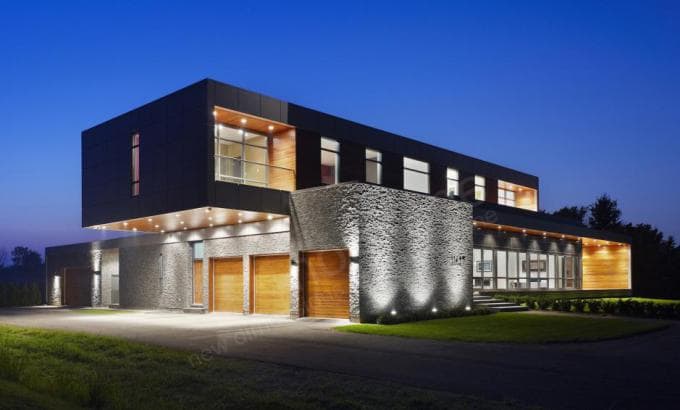Natural Stone Panels for Siding Applications
Siding is a common term for the exterior envelope of a building, most often a house, and historically has most often been associated with wood, metal, and most recently cement board. All of these products generally came in long sections that were easy to install using mechanical fasteners. Stone has also been a natural choice for the exterior siding of a building, offering up a far more durable and lower maintenance product than wood or metal, but was often looked over by a higher initial cost ad more complex installation process.

With the advent of thin stone veneer panels, stone siding for houses is becoming a much more reasonable alternative. Panel systems are much lighter weight than traditional stone masonry, making the installation process simpler, and because the product is a panel system, the labor involved can be far less skilled than the stone masons of yesteryear, resulting in faster more cost effective installations. Let’s take a look at what makes stone siding a great choice for your next siding project and some things to consider when tackling a stone siding project.

The biggest benefits to a stone siding project are going to be the durability and lifetime cost of ownership of the material as compared to others. If installed correctly, stone siding should last a minimum of 25 years, and in all reality most installations will last the lifetime of the structure. While other forms of siding are no doubt going to be less expensive both to purchase and have installed, the lifetime ownership costs of these other products should be considered. Depending on the environmental factors and ongoing maintenance schedule, wood, metal, and other types of siding can also last 20 years plus, but the big difference will be the time and costs associated with maintaining it. Almost any type of siding besides stone is going to need to be painted in the range of every 5-10 years, not to mention routinely cleaned. With quality exterior paint costing upwards of $50 per gallon, the costs add up quickly when factoring in labor and the number of repeat times a wood, metal, or cement siding product needs touched during the lifetime of the structure.

If the benefits of using a stone siding product are clear to you, probably the most important thing for a long lasting installation is ensuring that the product is installed right the first time. This is especially true if the stone siding is replacing another product on the exterior envelope because more than likely the way the old material was installed will be different than how stone siding should be installed.

One critical difference in a stone siding application and a more traditional lap siding application is the management of moisture within the wall system. Depending on what type of technique is being used to install the stone, such as dry stack vs pointed mortar, the manufacturer might recommend a variety of different air / water barrier systems to ensure that any water that does get behind the stone siding is effectively managed and moves away from the wall system. For a dry stack installation of stone siding like would be done with any of our stone veneer panel products, we recommend a waterproofing membrane be applied over the substrate that the stone siding is applied to. This membrane waterproofs that substrate making sure that the wall behind it stays dry and issue free!
Thanks for learning more about why stone siding is a great choice for exterior wall applications. Check our our exteriors gallery for more photos and ideas about how Norstone natural stone wall products can be used in siding applications and contact us today with any questions, sample requests, and to talk more about your next stone siding project!
.png)



